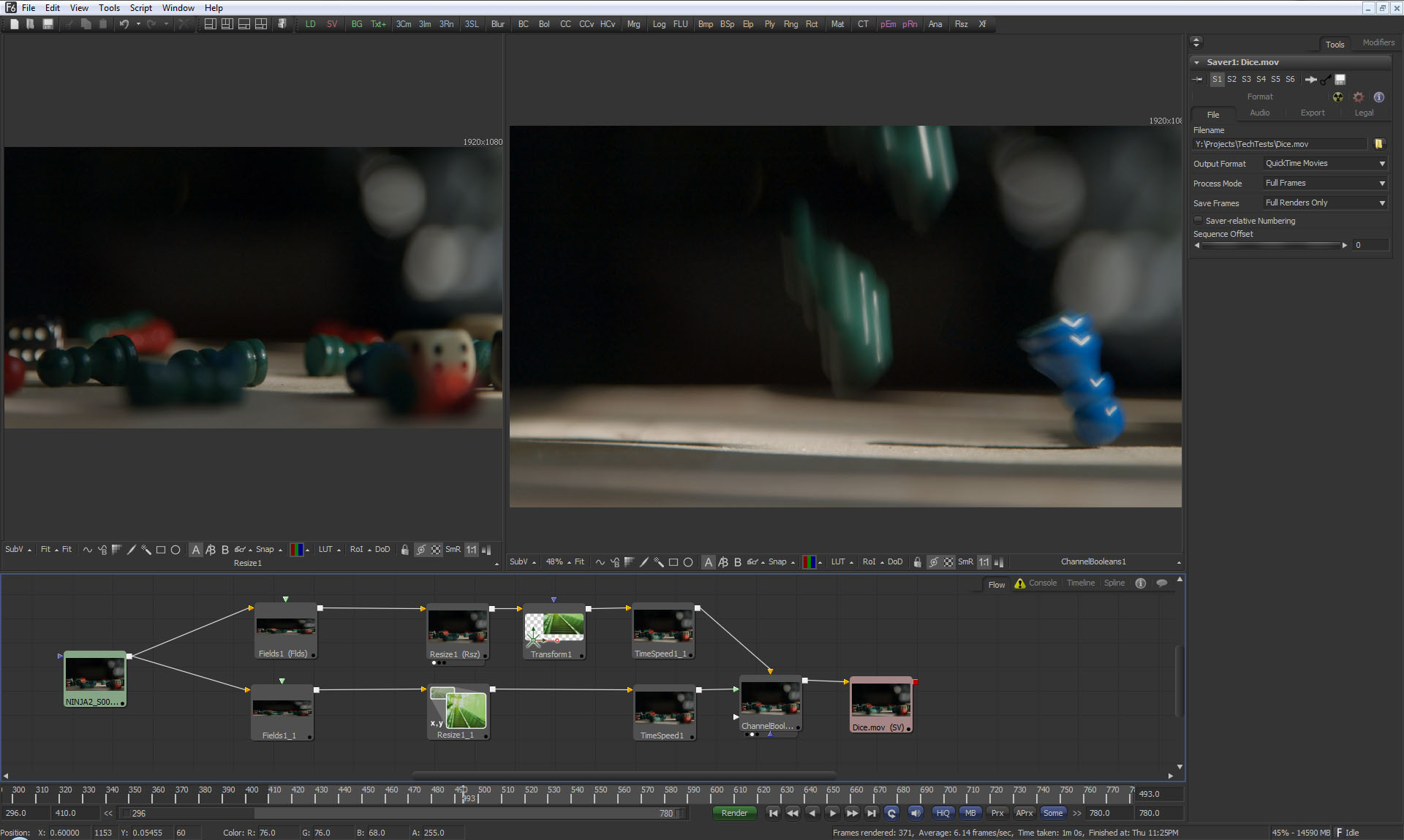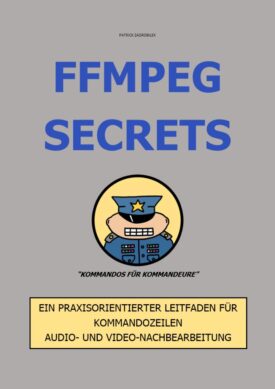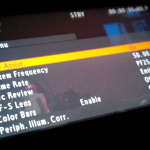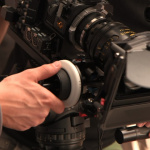Canon C100: The Lost 60p Hack
The Canon C100 sadly does not have 60p, not even in 1280×720. It just a marketing-strategic move from Canon that people still buy their more expensive C300.
But with a little knowledge in compositing you can extrapolate 60p out of a 60i – interlaced recording.
I call it the 60ip-line-alternating method.
The workflow is as following:
First set you C100 to 60Hz (NTSC) and to 60i recording, and set up your Ninja2 Recorder to 60i too. If you dont have a Ninja2 just use the internal AVCHD codec from the camera – this will work too, but you will not get the same color-edge-sharpness lile from the 4:2:2 Ninja2.
Record your fast motion just normal as you would do with a camera that would be capable of 60p.
Now it starts getting a bit more complicated.
Get your clip in a compositing software like AfterEffects, I prefer Eyeon’s Digital Fusion with it’s node-based effects-structure.
The theory behind it is that we have to extract every other field from the clip, interpolate it’s vertical resolution back to the full 1080p with a good scaling algorythm like Lanczos and then move the lower field (or the upper) to the same vertical pixel-line-position of the other field.
The vertical 1-pixel transposal of the second filed compensates the alternating position that would normaly happen when a movie with interlaced fields is played back.
Now the two progressive streams needs to be time-stretched to the target framerate percentage of your slomo-movie.
The last step is to alternate-blend the two streams back together in a zig-zag fashion every other frame to the final sequence.
VOILA!
Now you have a movie that has a 40% slomotion from a 60i interlaced movie recorded with your C100!
Watch my example movie to see the effect in motion. I still have to use it on other situations with sharp structures, but I’m sure it holds well and I think it will look better then 720p.
| Subscribe to our Newsletter and get a special discount for our Webshop and a LUT Gift Package! |















 Deutsch
Deutsch
The same can be done in Virtualdub in minutes.
I haven’t used VirtualDub for a long time – what version do you use?
I’m sure it’s possible in many “capable” compositing packages 🙂
Or you can just drop it in your NLE 24p timeline and let the editor do the work for you.
Meanwhile FCX and PremiereCC can produce pretty good jitterfree slomo from 60i material.